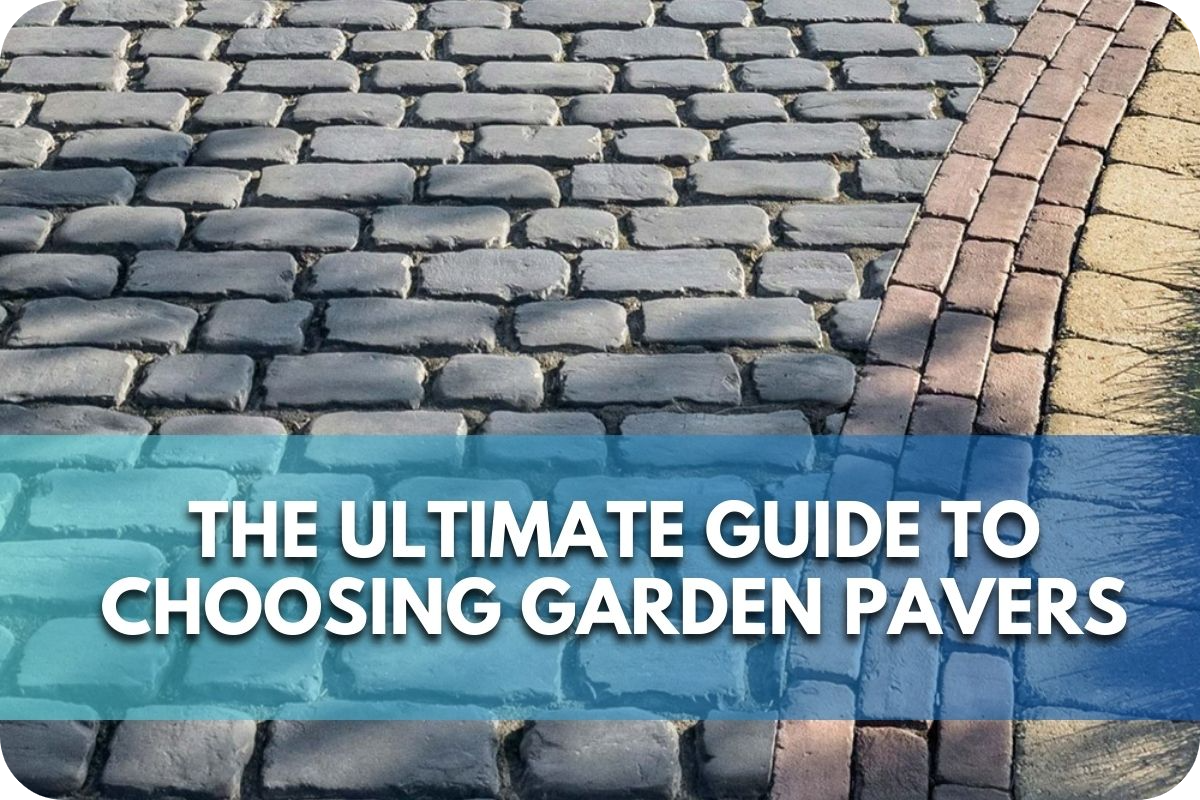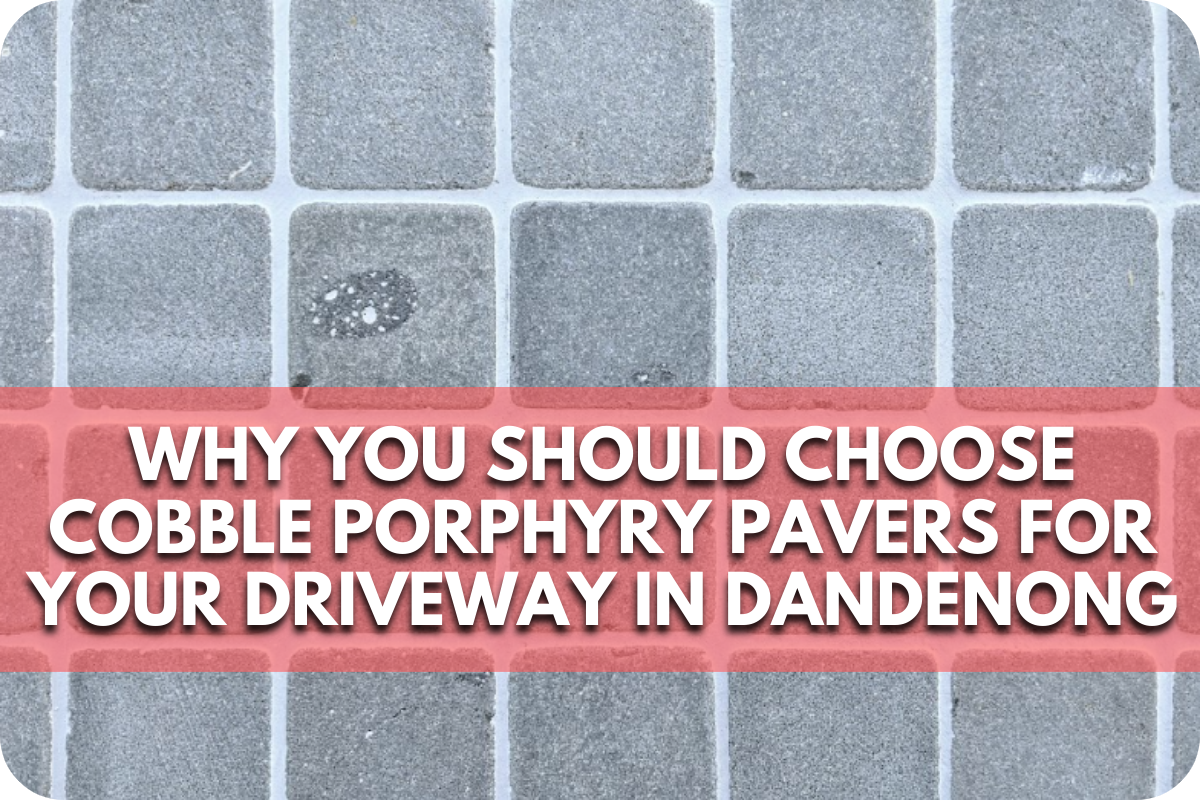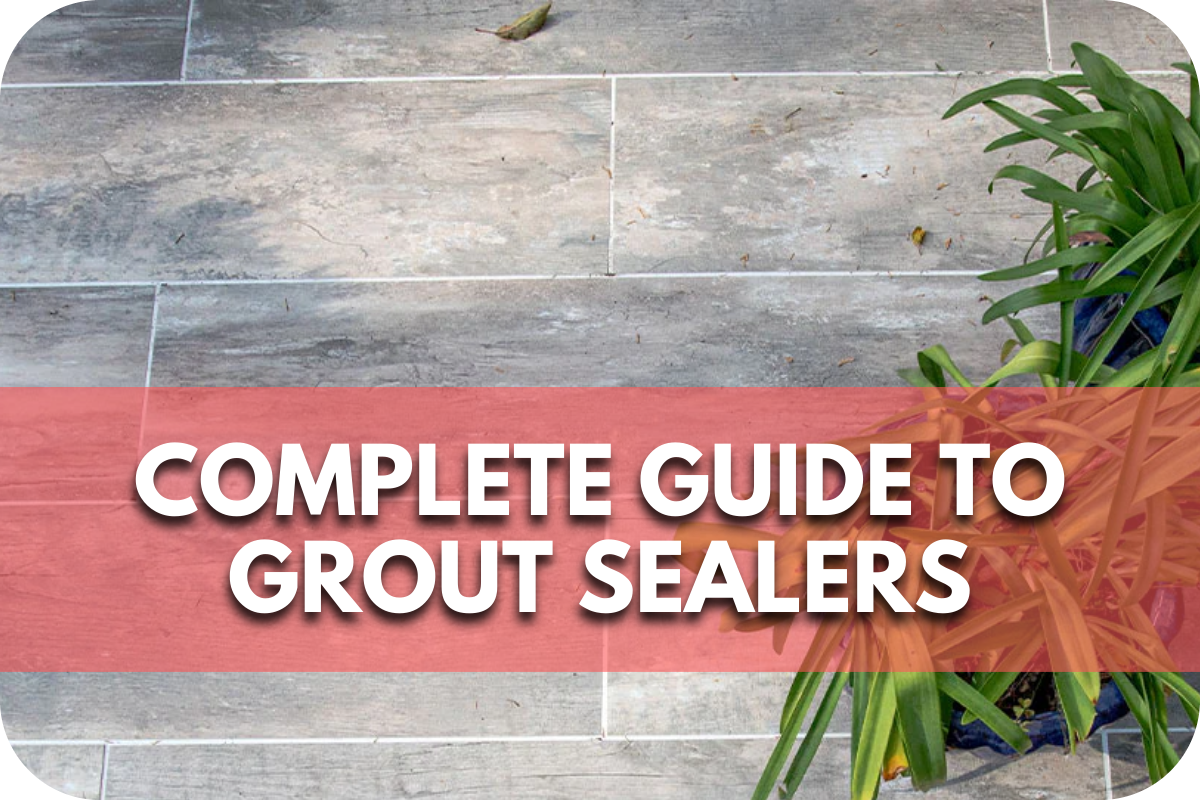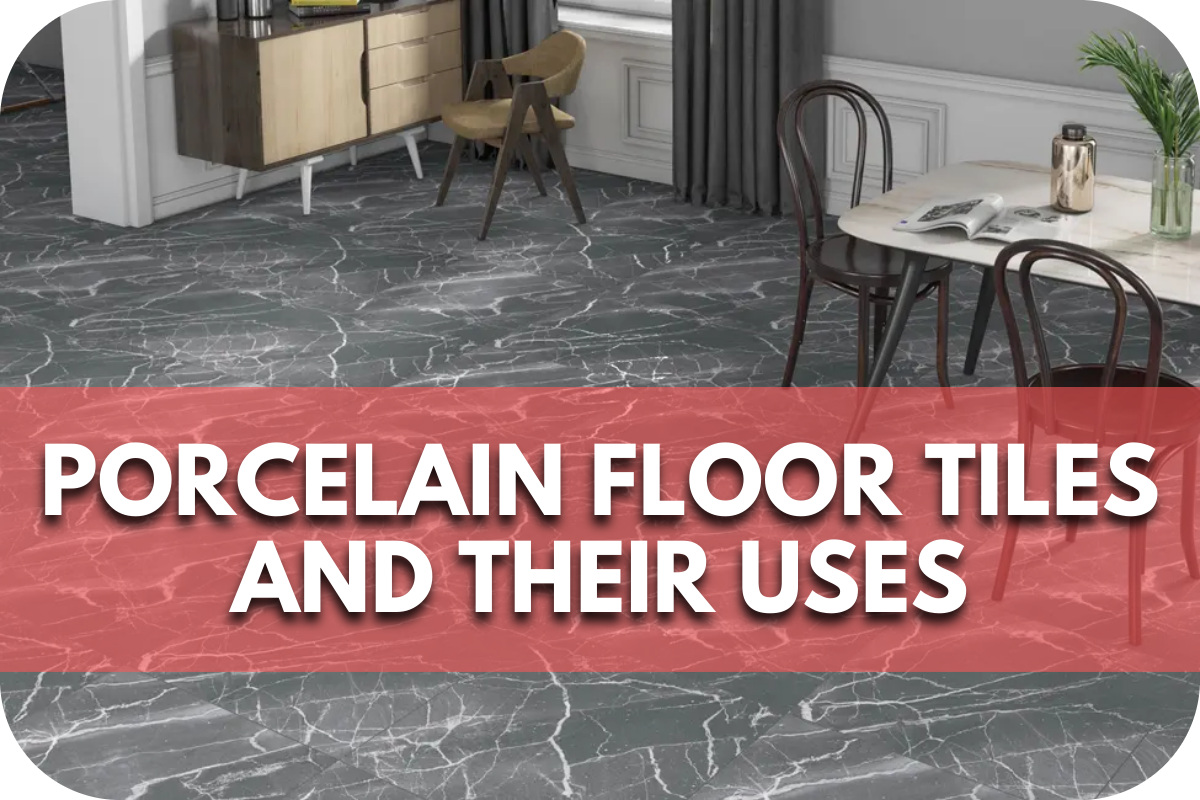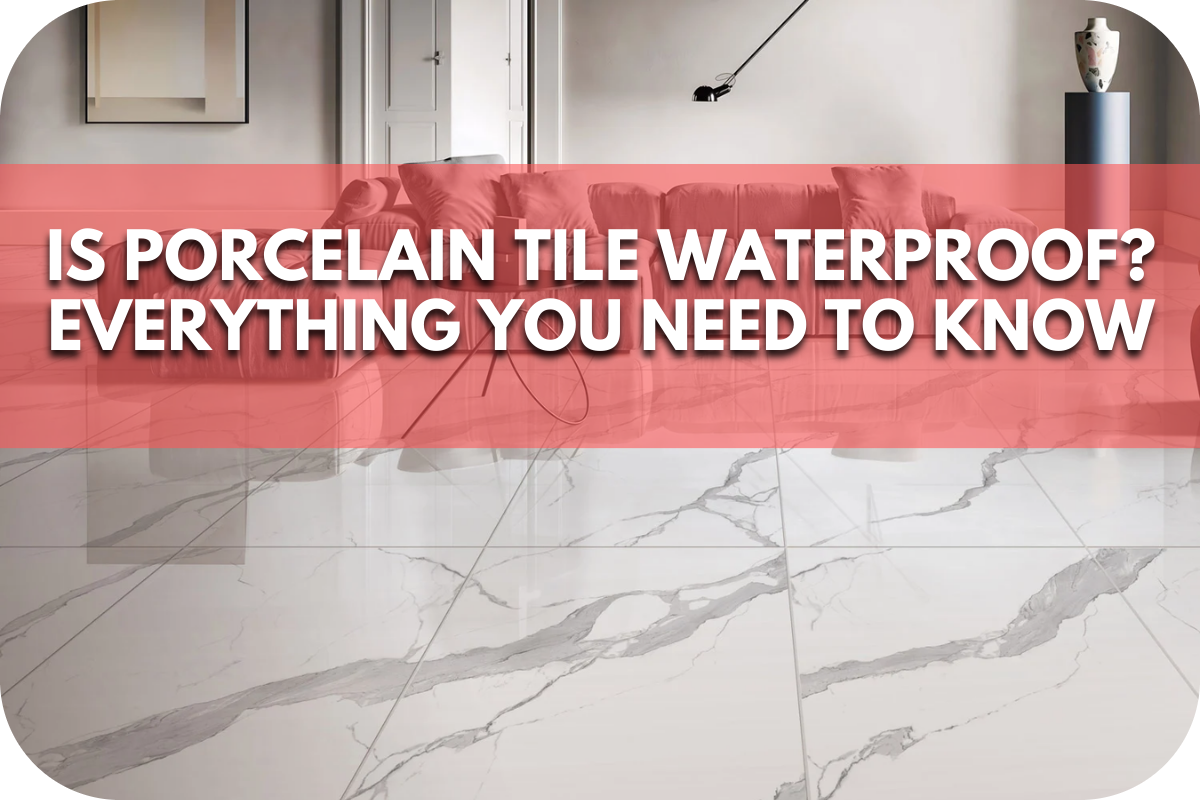The Ultimate Guide to Choosing Garden Pavers: Everything You Need to Know
Creating a beautiful and functional outdoor space can be daunting, especially when choosing the right garden pavers.
With countless options available in the market, it’s easy to feel overwhelmed and unsure where to start. Picking the wrong pavers can lead to costly mistakes and disappointing results.
This guide will cover everything you need to know about choosing garden pavers, from materials and sizes to costs and installation techniques, ensuring your outdoor oasis is stunning and long-lasting.
Types of Garden Pavers
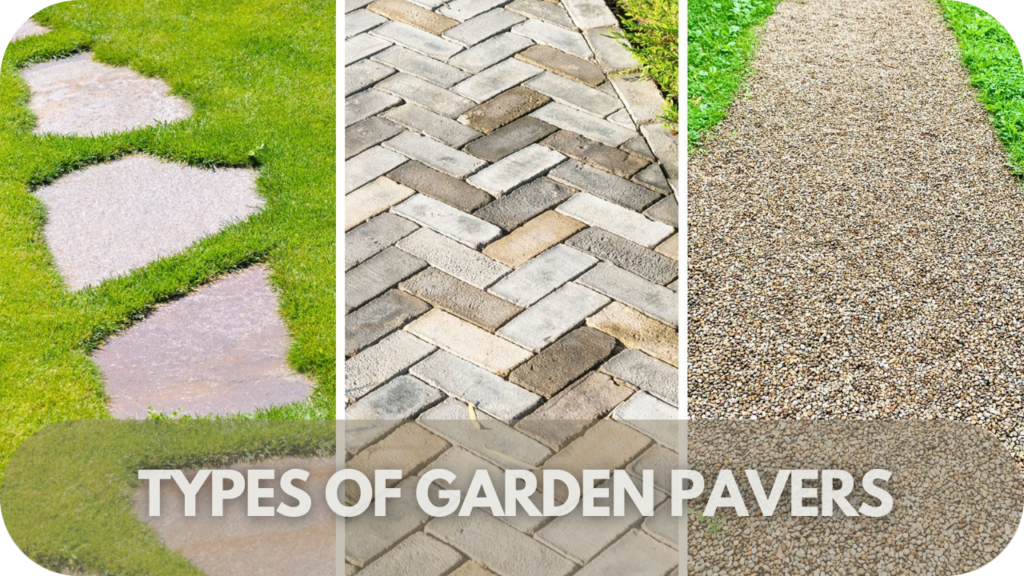
Choosing the right garden pavers can transform your outdoor space. Learn the different types of pavers to find the perfect fit for your garden’s style and function.
1. Concrete Pavers
When choosing pavers for your garden, concrete offers an ideal balance of durability, versatility, and affordability. Available in a wide range of shapes, sizes, and colours, it can complement various garden designs.
Concrete pavers are known for their resilience, handling both high traffic and extreme weather with ease. They require minimal maintenance, with occasional cleaning and sealing to retain their aesthetic appeal.
2. Clay Pavers
With their natural, earthy tones, clay pavers bring timeless beauty to any garden, making them a versatile choice for both traditional and modern landscapes.
Durable and resistant to fading, cracking, and weathering, clay pavers maintain their appearance and integrity even in harsh climates. Their low maintenance requirements make them a practical option, needing only occasional cleaning.
As a sustainable choice, clay pavers are made from natural materials, adding an eco-friendly touch to your outdoor space.
3. Natural Stone Pavers
These pavers bring unparalleled elegance and unique character to any garden. Each stone is distinct, offering a one-of-a-kind appearance with beautiful textures and natural colours.
Stones like granite, slate, and sandstone are celebrated for their durability, making them perfect for high-traffic areas and extreme weather conditions.
Low maintenance and highly resistant to wear, these pavers retain their charm for years with minimal upkeep.
4. Rubber Pavers
They offer a sustainable and versatile option for garden paving. Made from recycled tyres, they provide an eco-friendly solution while helping to reduce waste.
These pavers are softer than traditional materials, making them ideal for areas where safety is a priority, such as playgrounds or paths.
Highly durable and weather-resistant, rubber pavers are not prone to cracking or fading, ensuring long-lasting performance. Their non-slip surface also makes them a safer option in wet conditions.
5. Porcelain Pavers

Are a sleek and modern choice for garden paving, known for their sophisticated appearance and durability. Available in a wide variety of finishes and colours, they can complement any outdoor style, from contemporary to minimalist.
Porcelain is highly resistant to staining, fading, and scratching, ensuring long-term performance with minimal upkeep. These pavers are low-maintenance, requiring only occasional cleaning to retain their pristine look.
With exceptional strength and slip resistance, porcelain pavers are ideal for high-traffic areas and outdoor environments exposed to varying weather conditions.
6. Gravel Pavers
They provide an affordable and practical solution for garden pathways and driveways. Their permeable nature allows water to drain naturally, reducing runoff and supporting sustainable drainage systems.
Gravel pavers are easy to install and require minimal maintenance, often needing only occasional replenishment to maintain their integrity. They offer a rustic, natural aesthetic that complements various garden styles. Durable and able to withstand heavy traffic, gravel pavers maintain their structure over time.
Factors to Consider When Choosing Garden Pavers
When selecting garden pavers, it’s essential to consider several key factors to ensure that the final installation meets both aesthetic and functional requirements.
1. Durability and Maintenance
When selecting garden pavers, choose materials like granite or porcelain that can withstand harsh weather and heavy foot traffic. Durable pavers with minimal maintenance needs will ensure long-lasting performance.
Regular cleaning and occasional sealing can further extend their lifespan, making them ideal for both residential and commercial outdoor spaces.
2. Aesthetic Compatibility
When exploring garden pavers ideas, it’s important to ensure they seamlessly blend with your home and garden’s style and colour scheme. Consider matching the texture, colour, and shape of the pavers to the surrounding landscape and architecture.
A cohesive design ensures a visually appealing outdoor area, elevating the overall aesthetic of your garden or driveway.
3. Safety
Opt for pavers with slip-resistant surfaces to prevent accidents, especially in wet or high-traffic areas. Using pavers to make your garden pet-friendly ensures a safe, non-slip environment for both pets and people.
Textured finishes or flamed stones provide additional grip, making them perfect for paths, driveways, and patios. Safety features like these are crucial for maintaining a secure and functional outdoor environment.
4. Budget
Set a realistic budget that includes both the initial cost and long-term maintenance expenses.
While natural stone and porcelain pavers may have higher upfront costs, their durability and minimal upkeep can save money in the long run. Consider all factors, including installation costs, when finalising your choice.
5. Environmental Impact
For eco-friendly gardens, choose sustainable pavers made from recycled materials or those sourced responsibly. Recycled pavers can help reduce your carbon footprint while providing unique design features.
Opting for green paving solutions supports both environmental conservation and the creation of a more sustainable outdoor space.
6. Installation Requirements
Before purchasing, consider whether the pavers require professional installation or can be handled as a DIY project.
Paving materials like concrete and gravel are often easier to install, whereas natural stone or porcelain pavers may need professional expertise for proper placement. Installation complexity affects both cost and effort.
7. Climate Considerations
Take into account your region’s climate when selecting pavers. Weather-resistant pavers such as granite or porcelain are suitable for harsh climates, as they endure extreme heat, cold, or rain.
Some materials, like porous stones, may not be ideal for freezing conditions due to water absorption, which could lead to cracking.
8. Colour Fading
Consider how the pavers will hold up over time, especially in areas exposed to strong sunlight.
UV-resistant pavers, like porcelain and natural stone, retain their colour longer than other materials, ensuring your garden looks vibrant for years. Colour stability is an important factor for maintaining your garden’s aesthetic appeal.
9. Load-bearing Capacity
For areas exposed to heavy traffic or vehicles, ensure your pavers can handle the load. High-strength pavers made from materials like concrete or granite are ideal for driveways and parking spaces.
Be sure to choose pavers with the necessary load-bearing capacity to prevent cracking or shifting under pressure.
Design Considerations
Design considerations are crucial when selecting garden pavers, as they significantly impact outdoor spaces’ aesthetic appeal and functionality. Here are essential aspects to evaluate:
- Pattern and Scale: The layout and size of pavers should complement the scale of the garden and its surrounding features. Larger pavers can make a small space appear bigger, while smaller, more intricate patterns are ideal for large areas to add detail and interest.
- Colour Coordination: Choose colours that harmonise with the environment. Neutral tones blend seamlessly with most landscapes, while bold or contrasting colours can highlight specific areas or features. Consider the colour of your home’s exterior and existing landscaping elements to create a cohesive look.
- Integration with Landscape Features: Pavers should harmonise with the garden’s natural and built elements. Softer, more natural tones and textures work well for paths winding through greenery. For modern, structured gardens, geometric shapes and more refined textures might be preferable.
- Transition Spaces: Consider how paver designs can create smooth transitions between different garden areas. Consistent paver styles and colours can unify spaces while varying patterns and textures define separate areas or features.
Installation Tips
Installing garden pavers can transform your outdoor space but requires careful planning and execution. Select the right paver type for your garden’s style and function. Measure the area accurately and purchase 10% extra pavers for cuts and potential breakage.
- Prepare the Ground: Excavate the area to a depth of 150-200mm, ensuring it’s level. Remove any roots, rocks, or debris, and compact the soil using a plate compactor to prevent settling.
- Create a Stable Base: Lay a geotextile fabric to prevent weed growth. Add a 100-150mm layer of crushed stone or gravel, compacting it in 50mm increments to achieve a solid foundation.
- Add a Sand Layer: Spread a 30-50mm layer of coarse sand over the gravel. Use a screed board to ensure an even surface, maintaining a slight slope for water drainage.
- Lay the Pavers: Begin at a corner, placing pavers in your desired pattern. Use spacers to maintain consistent gaps. Periodically check for levelness and adjust as necessary.
- Secure the Pavers: Fill the joints with fine or polymeric sand, sweeping it into the gaps. Compact the pavers again to set them firmly.
- Final Touches: Water the area lightly to settle the sand. Edge the pavers with concrete or plastic edging to prevent shifting. Avoid common paver installation mistakes to ensure a long-lasting, stable finish.
Maintenance and Upkeep
Proper maintenance and upkeep are essential to ensure your garden pavers remain in top condition for years.
Regular care not only enhances the appearance of your outdoor space but also prolongs the lifespan of your paving.
Regular cleaning is key; sweeping frequently removes dirt and debris that can cause staining or encourage moss and weed growth. For a deeper clean, use a garden hose or pressure washer, taking care not to dislodge the joint sand.
Weed control is important for keeping your pavers neat and intact. Apply a weed killer annually and replenish joint sand to fill gaps, reducing the risk of weed penetration.
Stain removal should be handled promptly. For organic stains like food or leaves, a mild detergent solution works well, while oil stains require a paver-specific degreaser.
Sealing is highly recommended to protect pavers from stains, UV damage, and water penetration. Apply a high-quality sealant every 2-3 years for optimal results.
Replacing damaged pavers ensures a safe, functional surface. Inspect regularly and replace cracked or broken pavers immediately.
Conclusion
Choosing the right garden pavers is key to creating a functional, aesthetically pleasing outdoor space. Consider durability, style, safety, and environmental impact to make an informed decision.
Ready to transform your garden? Trust Splendour In Stone as your reliable service provider for premium pavers. Contact us today for expert advice and top-quality products to bring your vision to life.

